10 Slim Trees That Fit Beautifully in Small Yards
If you have a small yard or garden, choosing the right trees can make a big difference. Tall and narrow varieties add height and greenery without taking up too much space. These trees are perfect for lining walkways, creating privacy, or adding a touch of elegance to compact outdoor areas.
This post may contain affiliate links, which helps keep this content free. Please read our disclosure for more info.
Italian Cypress (Cupressus sempervirens)
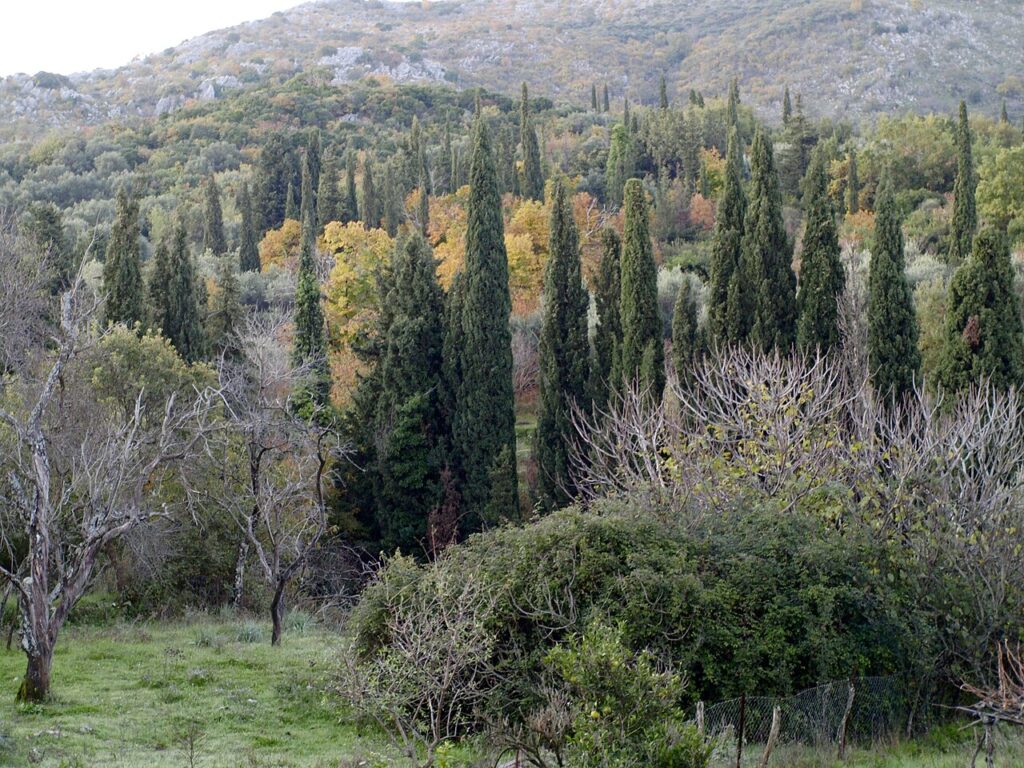
The Italian cypress is one of the most recognizable tall, narrow trees. With its column-like shape and dense evergreen foliage, it brings a sense of formality and structure to small outdoor areas. This tree thrives in sunny climates and is drought tolerant once established, making it both elegant and practical.
Because of its slender growth habit, Italian cypress can be planted close together to form a stately screen or border. It’s often used along driveways or to frame an entryway, instantly adding vertical interest without spreading out. Its timeless look makes it a favorite for gardens that aim for a clean and classic style.
Sky Pencil Holly (Ilex crenata ‘Sky Pencil’)
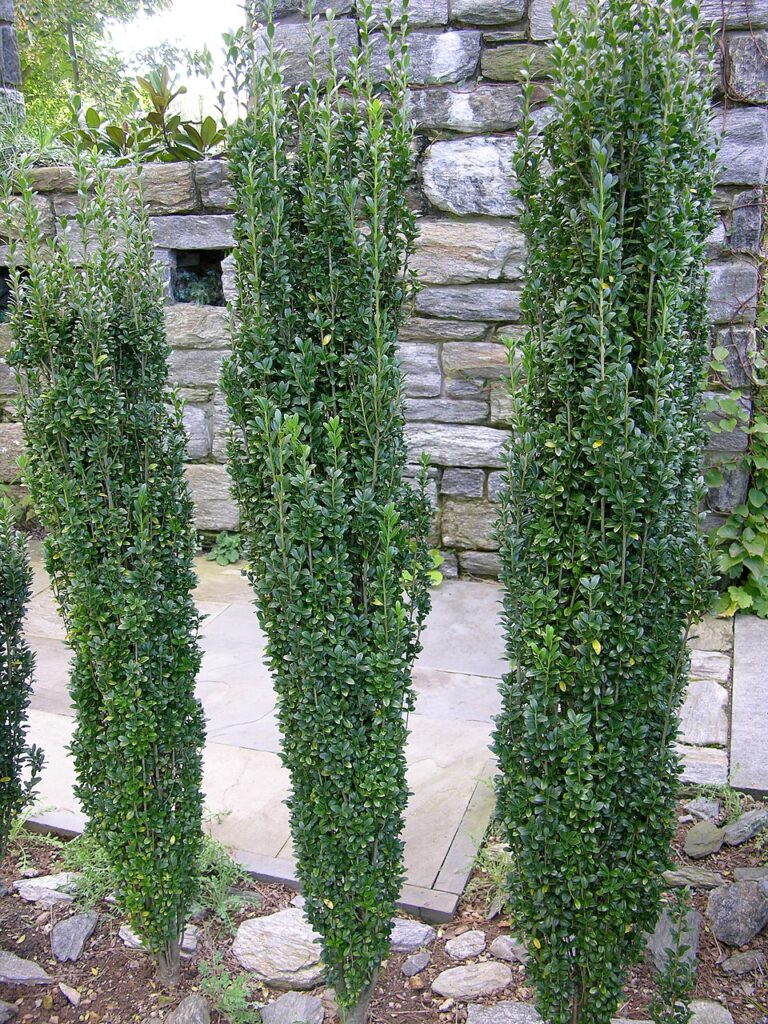
Sky Pencil holly lives up to its name with a narrow, upright shape that looks like a living column of greenery. This evergreen shrub can reach heights of 8–10 feet but stays just a couple of feet wide. It’s a great choice for adding vertical lines in small yards, patios, or tight planting beds.
The glossy, dark green leaves give it a tidy appearance year-round. Since it doesn’t require much pruning, it’s easy to keep neat in compact spaces. Many gardeners use it in pairs near doors, gates, or pathways for a symmetrical and refined effect.
Lombardy Poplar (Populus nigra ‘Italica’)
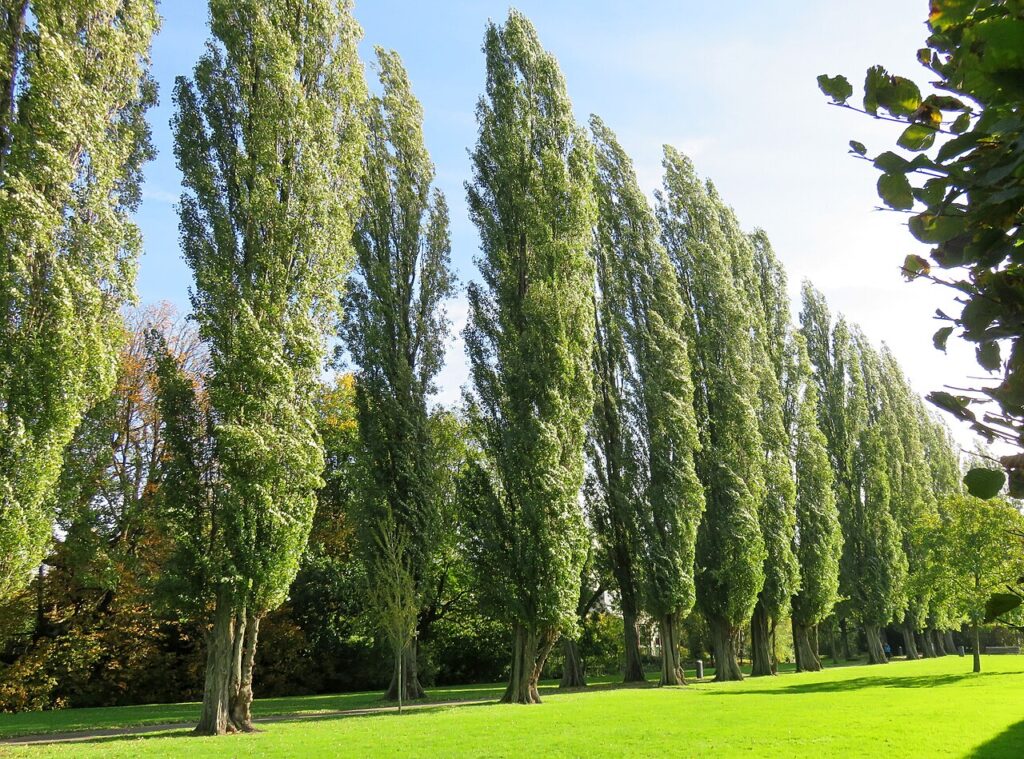
The Lombardy poplar is a fast-growing tree that quickly adds height to a narrow space. Its tall, columnar form makes it a striking option for lining long driveways or marking property edges. Because it grows quickly, it’s often chosen when an immediate impact is desired.
Although it creates dramatic structure, it does have a shorter lifespan compared to some other trees. Still, its ability to form an impressive vertical accent in just a few years keeps it popular. Regular care and placement away from structures help make the most of its beauty.
Emerald Green Arborvitae (Thuja occidentalis ‘Smaragd’)
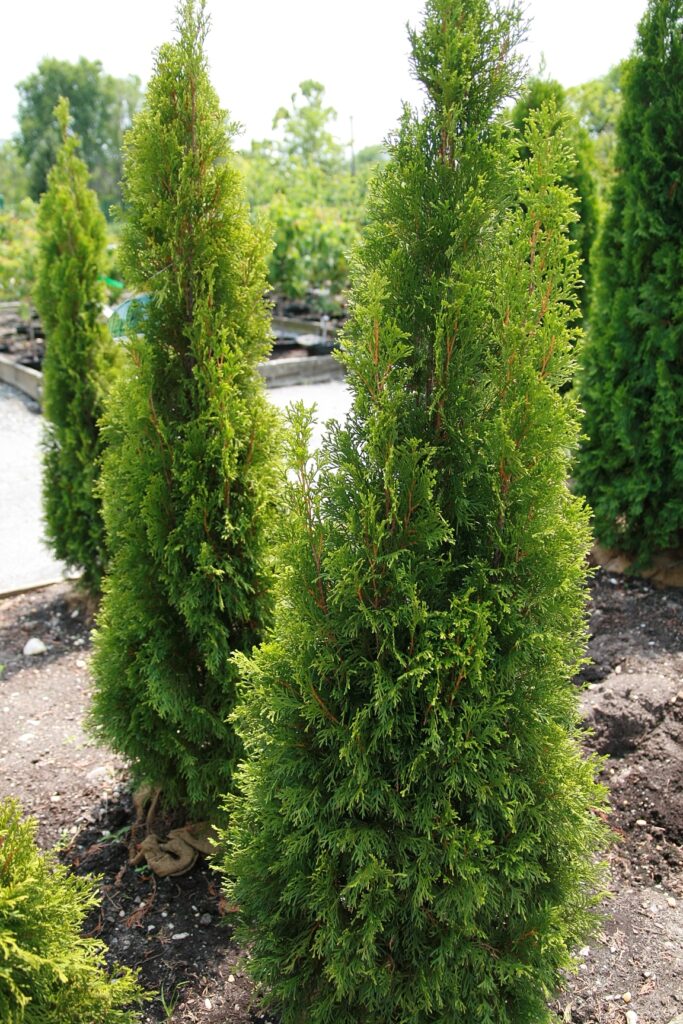
This arborvitae is loved for its rich green color and uniform, narrow growth. It usually grows 10–15 feet tall while staying only a few feet wide, making it a dependable choice for small gardens. Its evergreen foliage provides year-round screening and structure.
Many homeowners plant them in rows to form a natural privacy wall. They respond well to shaping, but their natural form is tidy enough without much trimming. Their ability to thrive in a range of conditions adds to their appeal for compact outdoor spaces.
Slender Silhouette Sweetgum (Liquidambar styraciflua ‘Slender Silhouette’)
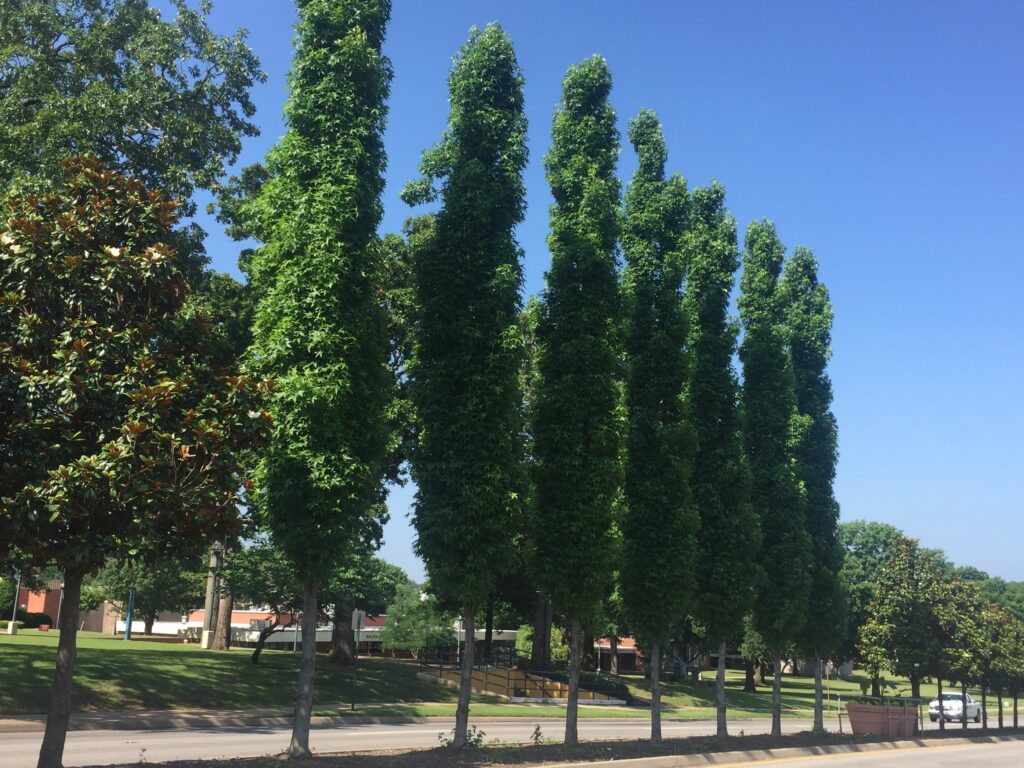
This sweetgum variety grows impressively tall while keeping an unusually slim profile. It can reach 50–60 feet but stays just a few feet wide, making it perfect for tight areas where height is desired without spreading branches. Its star-shaped leaves bring seasonal charm, especially with vivid fall colors.
Despite its towering presence, it rarely produces the messy seed balls that other sweetgum trees are known for. The clean trunk and vertical lines give a striking look to even the smallest yard. Many gardeners use it as a focal point that draws the eye upward.
Japanese Blue Ice Cypress (Cupressus arizonica var. glabra ‘Blue Ice’)
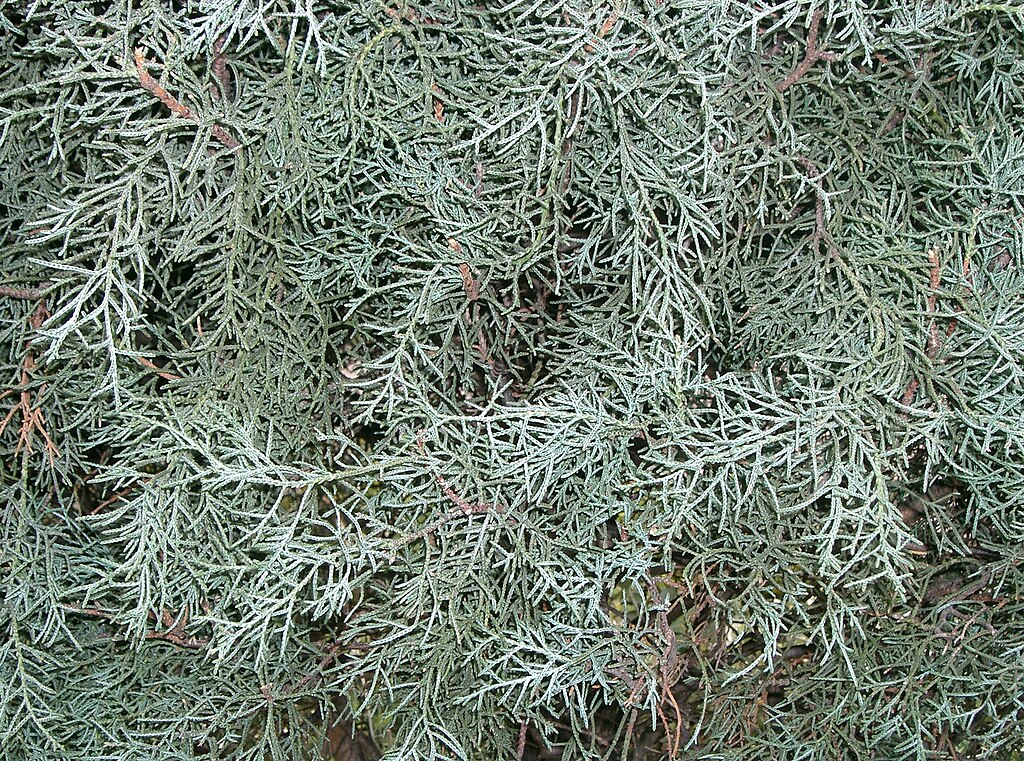
This cypress has a narrow habit and eye-catching silvery blue foliage. It can climb to 30 feet tall yet keeps a relatively slim form, which suits compact gardens. Its color makes it stand out from other greenery, offering a cool contrast in mixed plantings.
Because of its drought tolerance, it performs well in dry or hot regions. The foliage maintains its beauty throughout the year, providing consistent interest. Planting it in a sunny spot allows its shimmering tones to stand out even more.
Columnar Hornbeam (Carpinus betulus ‘Fastigiata’)
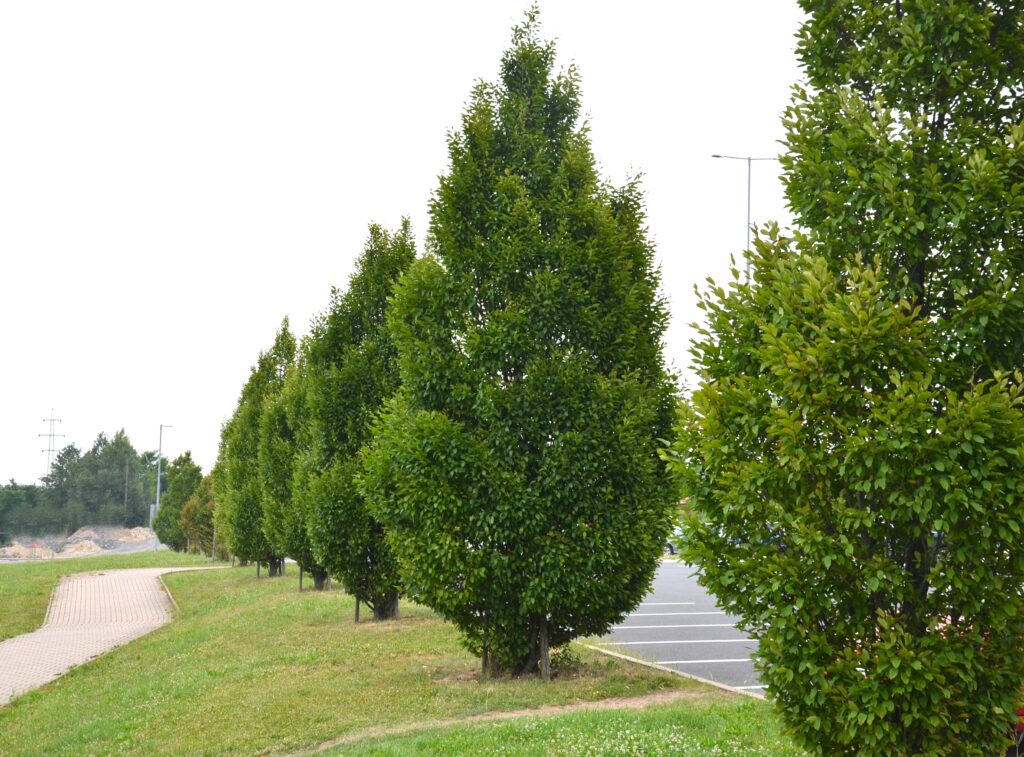
The columnar hornbeam forms a tall, vase-like shape with dense foliage. It can grow 30–40 feet tall while remaining relatively narrow, making it a reliable choice for structured plantings. Its strong branches and lush green leaves give it a solid, upright presence.
In autumn, the leaves shift to golden tones, adding seasonal appeal. Gardeners often use it for hedges or to frame walkways since it responds well to pruning if needed. Its formal appearance makes it a favorite in both classic and modern garden designs.
Skyrocket Juniper (Juniperus scopulorum ‘Skyrocket’)
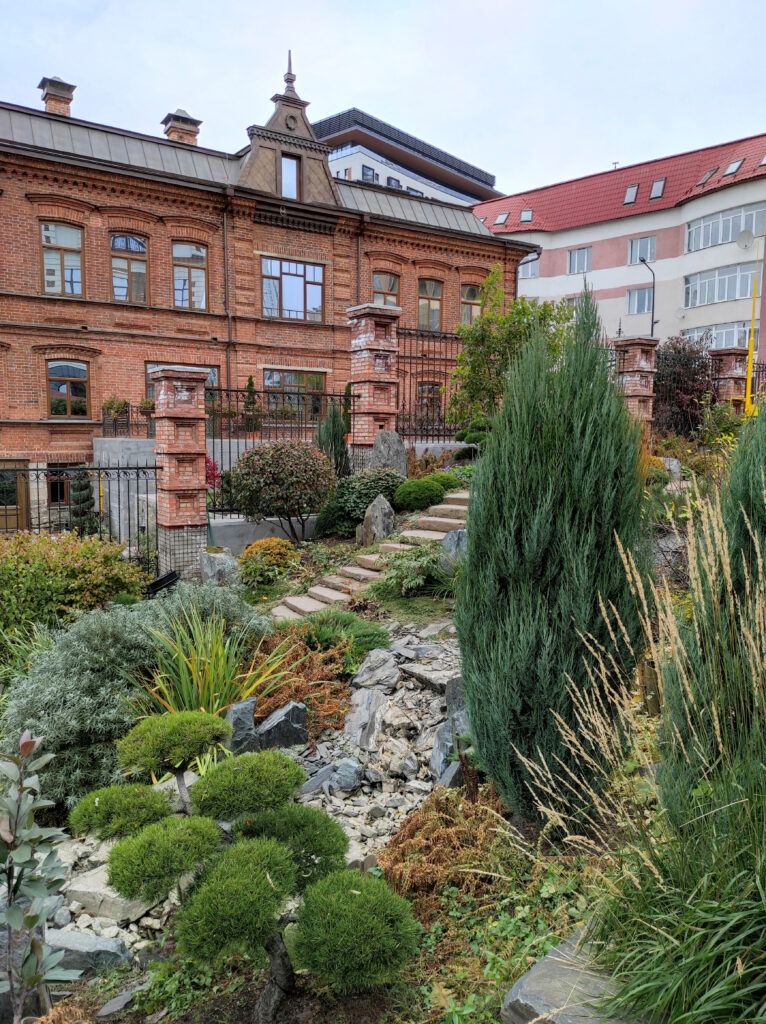
Skyrocket juniper is one of the narrowest evergreens available. It typically reaches 15–20 feet tall but spreads only about 2–3 feet wide. This pencil-thin profile makes it ideal for planting in tight spaces where greenery is desired.
Its silvery blue foliage provides year-round color. The tree is low-maintenance, tolerating poor soils and dry conditions with ease. When planted in groups, they form a striking vertical rhythm that instantly defines a space.
Fastigiate Beech (Fagus sylvatica ‘Dawyck’)
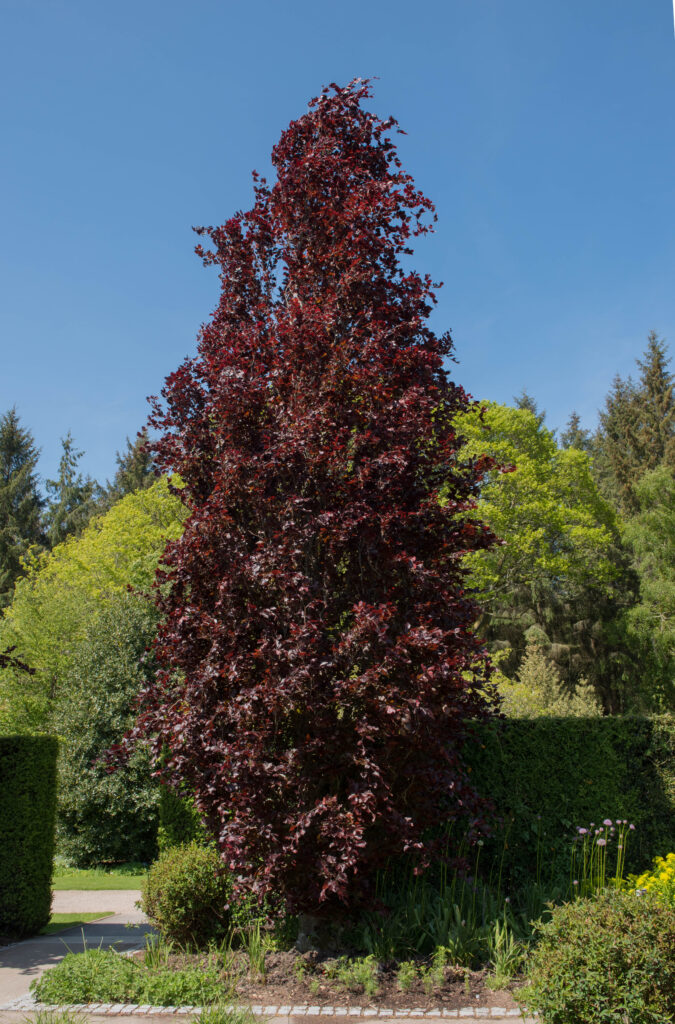
The fastigiate beech has a narrow, columnar habit that reaches impressive heights. It comes in different cultivars such as Dawyck Purple and Dawyck Gold, offering dramatic foliage colors. This makes it both a vertical and a colorful feature in a small space.
Its dense canopy provides a solid wall of greenery when used in rows. In autumn, the leaves change shades, creating seasonal variation without requiring much care. Its stately form is particularly suited to formal garden layouts.
Swedish Aspen (Populus tremula ‘Erecta’)
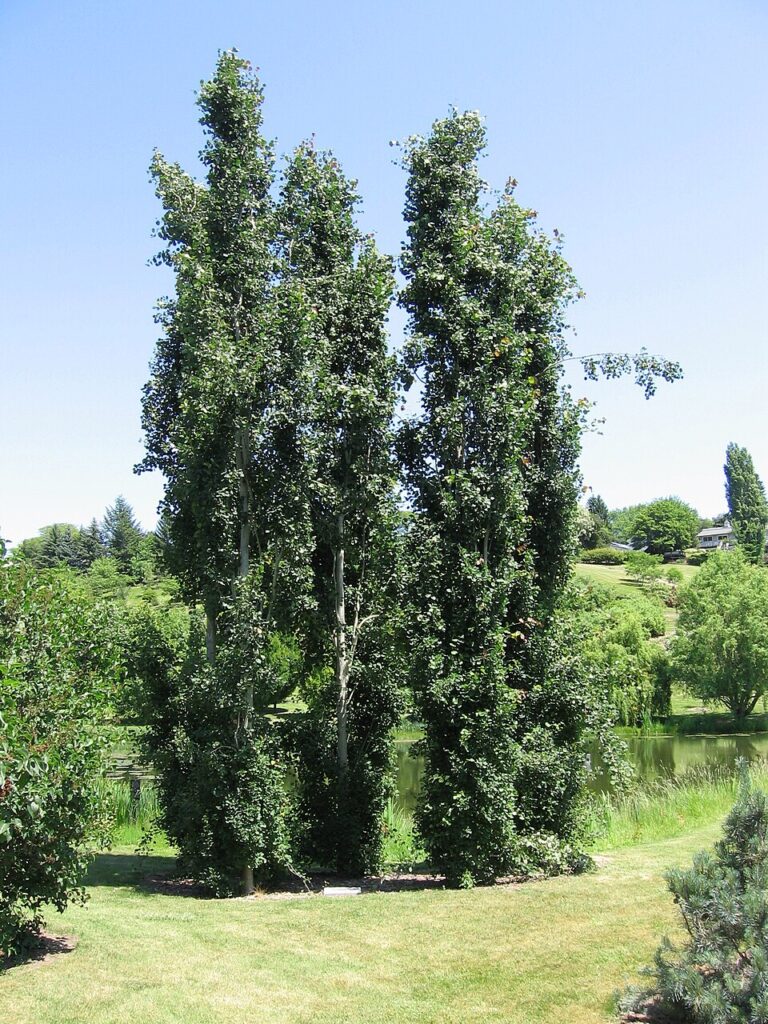
Swedish aspen is known for its tall, slender silhouette and fluttering leaves. It grows 40–50 feet high while maintaining a very tight form, which makes it suitable for compact spaces. The leaves shimmer in the breeze, creating constant movement and light.
In autumn, its foliage turns shades of yellow, adding a seasonal highlight. Because of its upright growth, it’s often planted in rows to form a striking screen or boundary. Its fast growth rate means it establishes quickly, bringing height to a space in a short time.
This article originally appeared on Avocadu.
